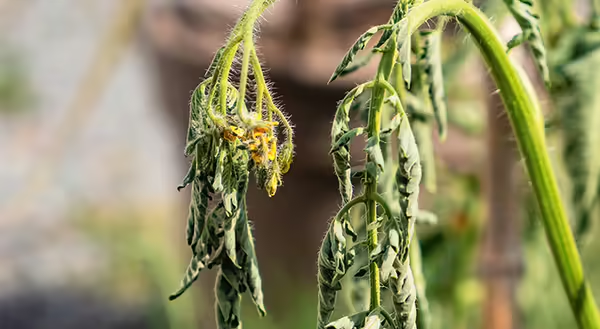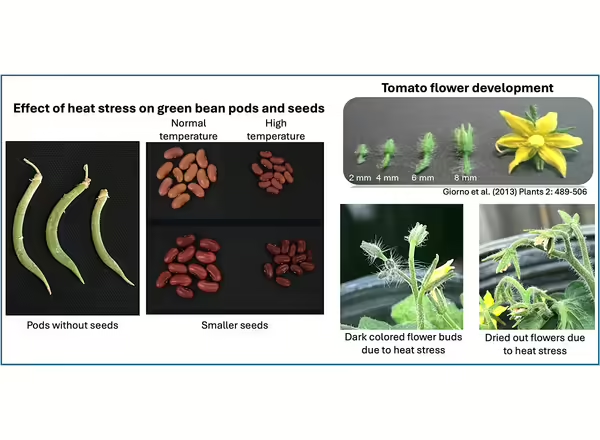
The following article was written by Dr. James Santiago, Assistant Professor Horticulture, University of Illinois Department of Crop Sciences. Many specialty crops we consume develop from flowers including apples, squash, beans, peas, etc. Having an elongated shape, the State of Illinois has drastically different temperatures between the northern and southern parts. According to the State Climatologist, temperatures above 90°F averages just 10 days in the northern part of the State while in the southern parts, the average is around 40 days. Although summer temperatures over 100°F are said to be rare, it occurs and is a threat to specialty crop production.
Depending on plant species, high temperature stress can be a huge problem that affects profitability. Heat stress affects plant yield at the flower and fruit level. At the flower level, especially when the flowers are very young (3.0 to 3.5 mm long for tomatoes), occurrence of high temperatures above 92°F leads to abnormal or complete cessation of pollen development leading to reproductive failure, i.e. no formation of fruits and seeds. The female parts of the flower (ovary) that get fertilized by sperm cells coming from pollen grains are also vulnerable to high temperature, although it is less sensitive than the male tissues (anthers and pollen grains). When older flowers are hit with high temperature, the whole flower will dry out and drop.
Continuing with tomato as an example, the impact of high temperature at the fruit level includes a green shoulder on the fruit because the pigments that make the fruit red are not produced at temperatures higher than 85°F. Tomato fruits also develop sunscald and blossom end rot when exposed to high temperature, therefore lowering their quality and marketability.
For green beans, very young green flower buds that are still green in color are very sensitive to temperatures above 90°F and could lead to unfilled or partially filled pods due to aborted pollen development and significantly reduced reproductive success. In cases where bean pods with developing seeds inside are exposed to prolonged heat waves, the resulting seeds are observed to be smaller.

Strategies to alleviate heat stress in crops:
- Watering – During the summer when the temperature goes up, the increase in temperature also accelerates evaporation of water from the soil, which means that plants are also at risk of water stress in addition to heat stress. Ensuring plants have adequate water during days when temperature is forecasted to be high helps alleviate heat stress. Further, misting can also help remove heat from the plants much like how sweat removes heat from animals. Overhead misting is most effective when applied during the middle of the day to allow adequate time for the water to dry out because excessive moisture on the leaves during the evening can promote the growth of pathogens.
- Shading – Using shade cloths can significantly help mitigate heat stress on plants. For leafy greens like spinach and lettuce, a shade cloth that blocks about 50% of the sun is beneficial while for sun-loving plants like tomatoes and peppers, a 30% shade cloth is often enough.
- Using heat-tolerant varieties – Many specialty crops nowadays have heat-tolerant varieties and can be strategically used especially in southern Illinois where it is warmer than in the northern part. On seed catalogs it is now common to see the heat tolerance rating of many varieties thus making it easier for growers to select the best one to use. While these heat tolerant varieties help limit the negative effects of heat stress on yield, it is only beneficial to use the other strategies with this to further reduce yield loss.
- Biostimulants – While this is still a relatively new field of research, there are studies that suggest the use of biostimulants as an effective method to minimize crop loss due to environmental stress. Because biostimulants itself is broadly defined (see Sible et al., 2025) and are very popular right now, many products have flooded the market and it is always recommended to be cautious about using commercially available products since its effectivity was reported to be influenced by the starting growing conditions (Li et al., 2022). For heat stress, comprehensive studies are still needed to firmly demonstrate the effectivity of this new class of agricultural input against the negative effects of high temperature on specialty crop production.